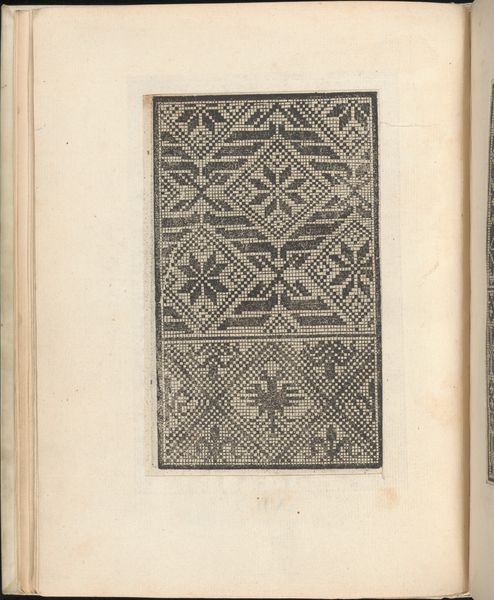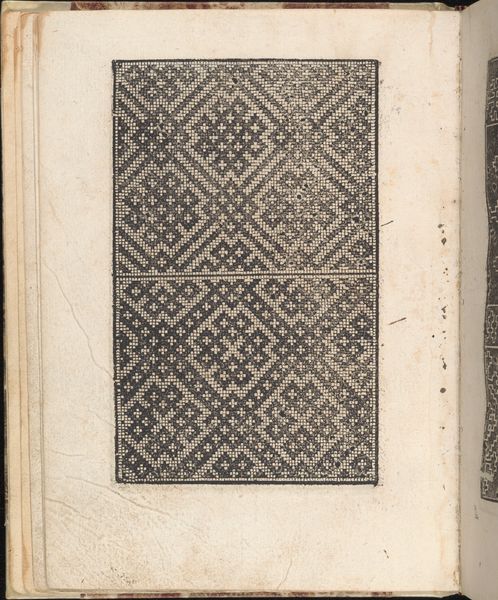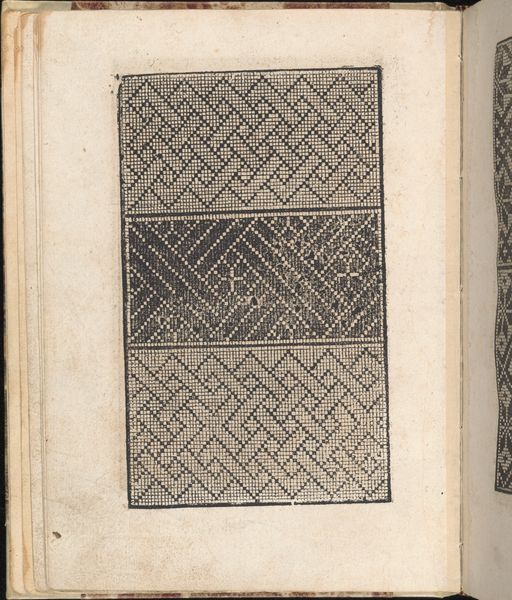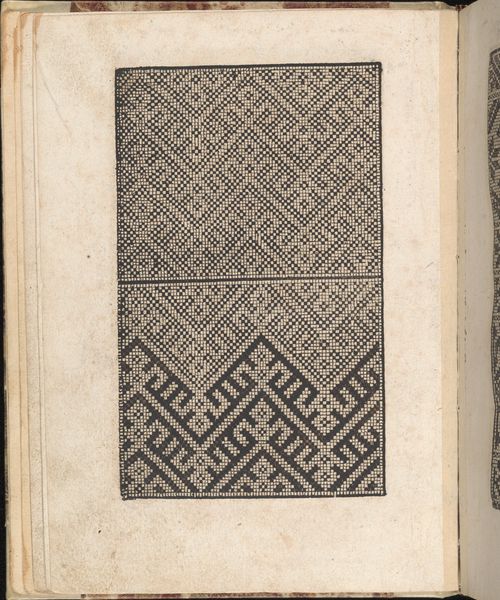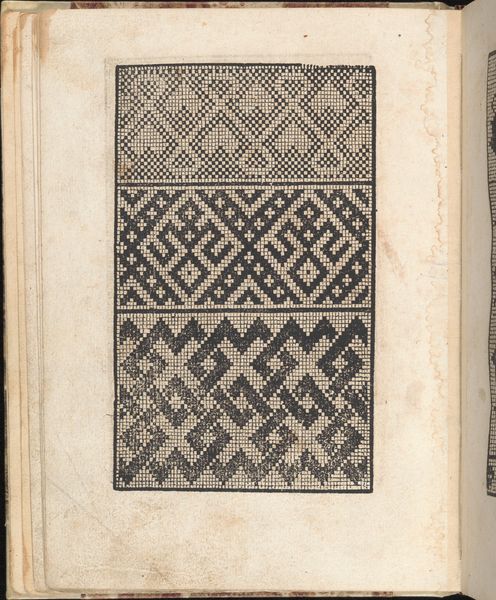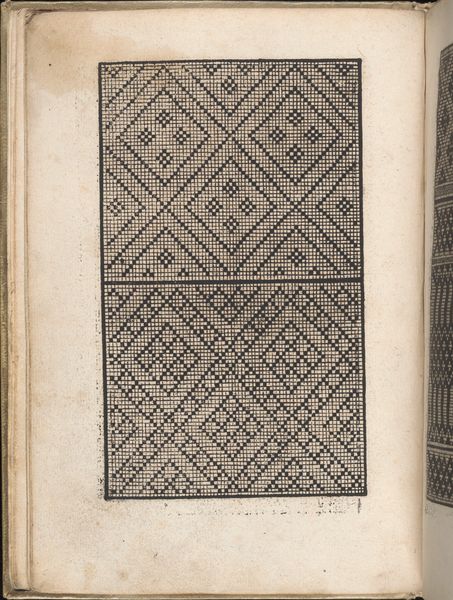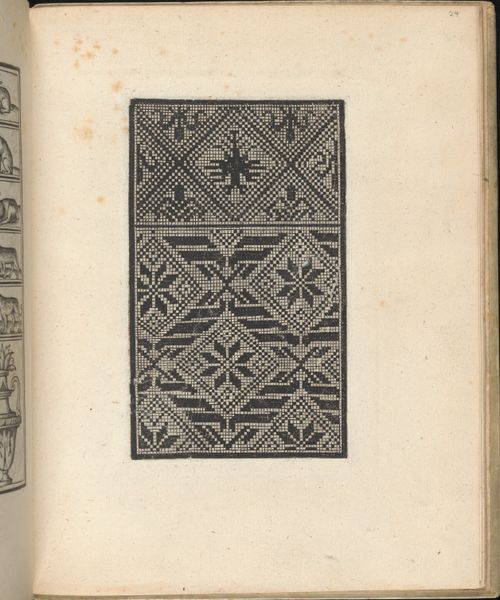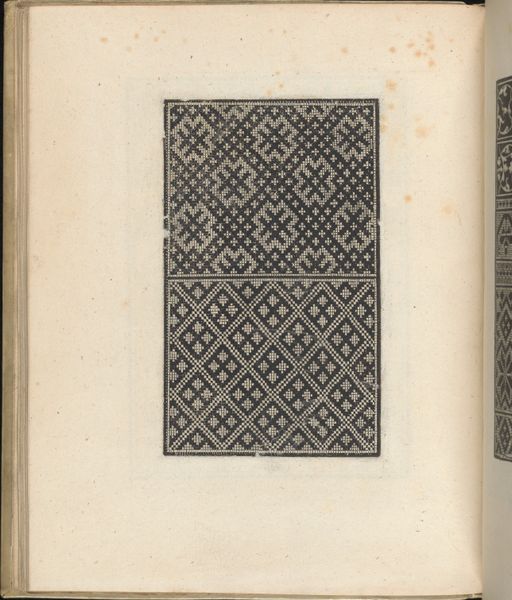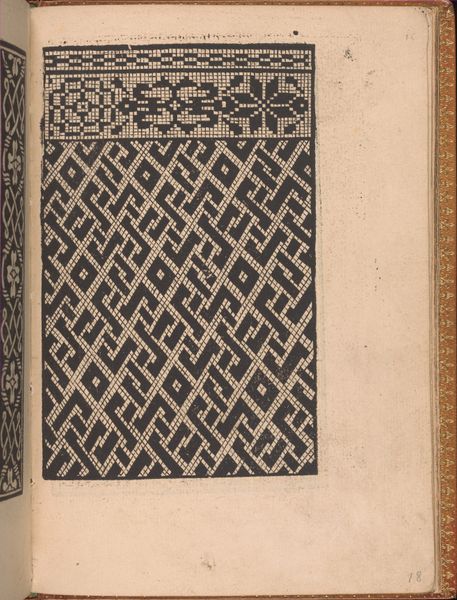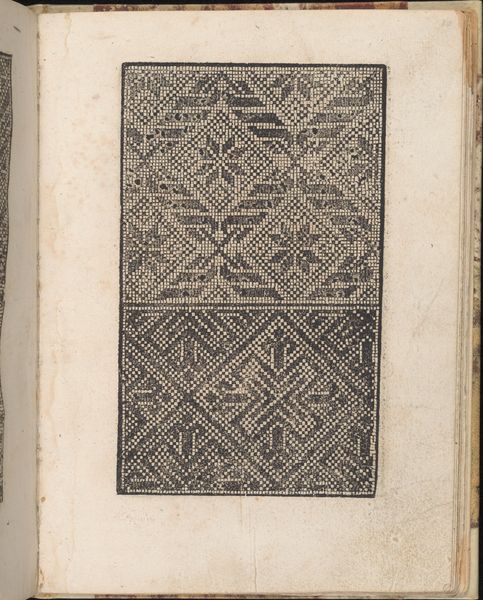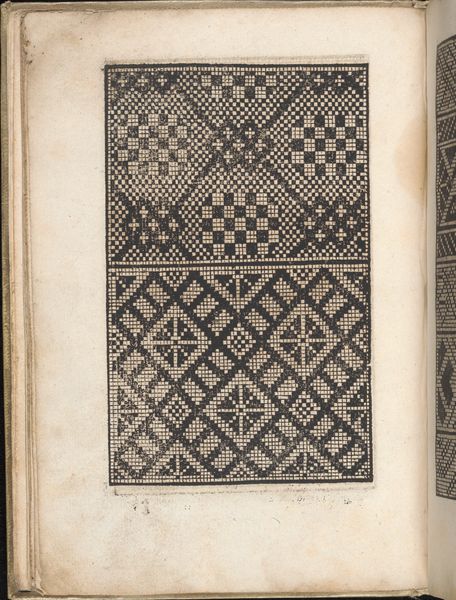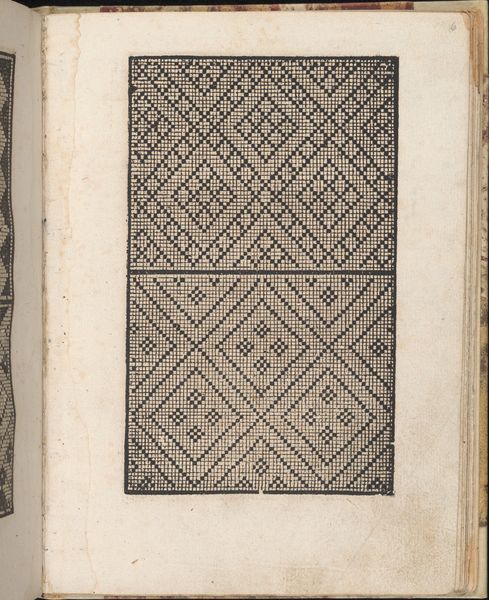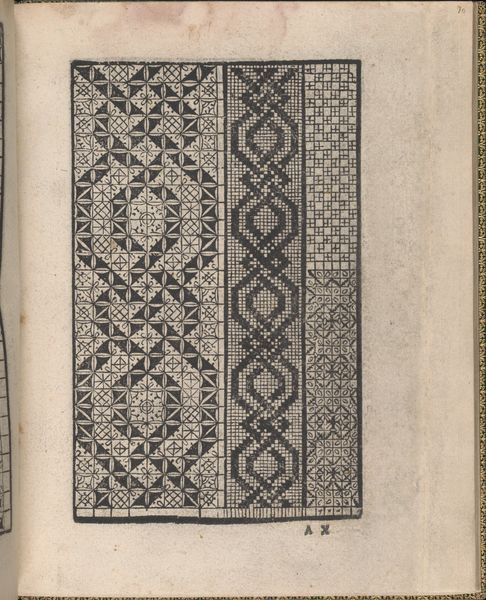
drawing, ornament, print, engraving
#
drawing
#
aged paper
#
ornament
#
toned paper
#
homemade paper
#
ink paper printed
# print
#
book
#
sketch book
#
personal sketchbook
#
geometric
#
pen and pencil
#
men
#
pen work
#
sketchbook drawing
#
italian-renaissance
#
italy
#
sketchbook art
#
engraving
Dimensions: 9 5/16 x 7 1/4 x 15/16 in. (23.7 x 18.4 x 2.4 cm)
Copyright: Public Domain
Editor: Here we have a page from "Esemplario di lavori" created in 1529 by Nicolò Zoppino. It's an engraving showcasing a variety of geometric patterns. Looking at it, I am struck by the almost mathematical precision of the designs. How do you see this work within the broader context of art history? Curator: It's fascinating how this seemingly simple page reveals a great deal about the social function of art in the 16th century. Consider that books like this served as pattern books for embroidery and other needlework. Their purpose was primarily utilitarian, acting as guides for artisans and even wealthy women crafting textiles for personal and commercial use. Editor: So, this wasn't necessarily conceived as 'art' in the way we think of it today? Curator: Exactly. The modern notion of the artist as a singular, expressive genius hadn't yet fully developed. Zoppino was, in a way, participating in the burgeoning print culture, democratizing access to design and contributing to the standardization of decorative motifs across Italy and beyond. These patterns would spread via the medium of print, copied and adapted in many different cultural settings. Editor: That’s a great point about accessibility! So, is its display in a museum today almost a recontextualization, elevating a functional object? Curator: Precisely. Museums often act as arbiters of value. By exhibiting this page, we encourage viewers to consider not just its aesthetic qualities but also its role in shaping visual culture and facilitating the circulation of ideas in Renaissance society. Consider the power of print in disseminating artistic ideas, making design accessible beyond elite circles. How do you think this impacts our understanding of art history? Editor: It makes me realize art isn't just about masterpieces, but also about everyday objects shaping society! Curator: Indeed, analyzing art through the lens of social and cultural history allows us to understand its multifaceted roles, even in seemingly simple forms like this.
Comments
No comments
Be the first to comment and join the conversation on the ultimate creative platform.

